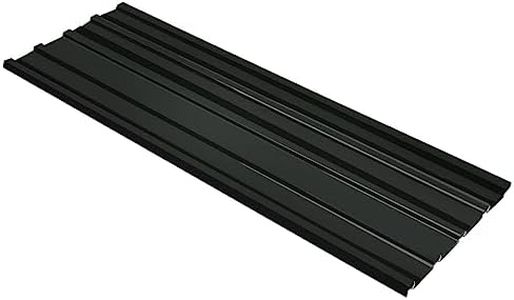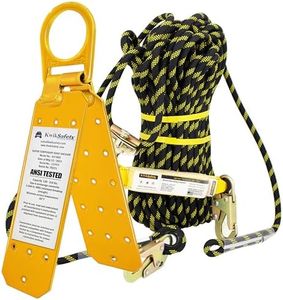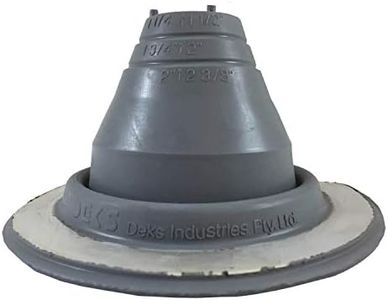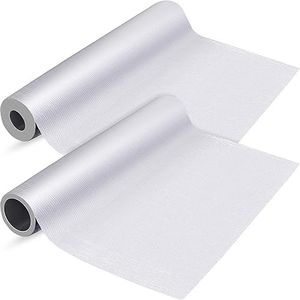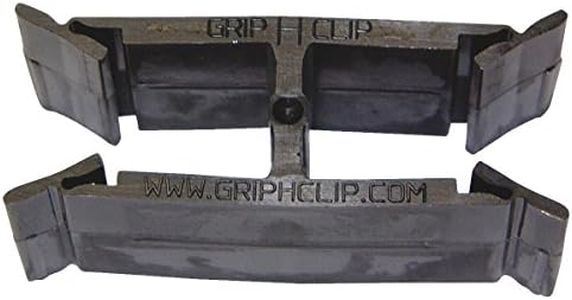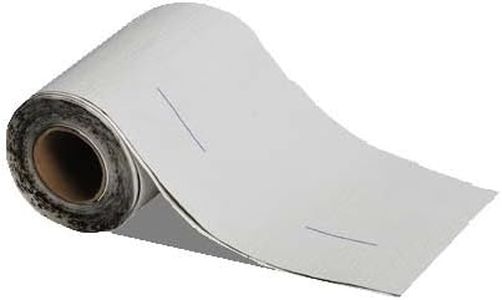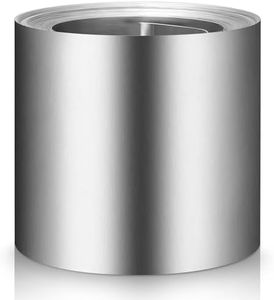We Use CookiesWe use cookies to enhance the security, performance,
functionality and for analytical and promotional activities. By continuing to browse this site you
are agreeing to our privacy policy
10 Best Roofing Shingles
From leading brands and best sellers available on the web.Buying Guide for the Best Roofing Shingles
Choosing the right roofing shingles is an important decision as your roof protects your home from the elements while also affecting curb appeal and potentially your home's value. There are several types of roofing shingles to consider, each with their own benefits, durability, and appearance. Your climate, house style, and maintenance preference will help guide your choice. It’s key to balance what looks good with what will last and perform best in your environment.Shingle MaterialShingle material refers to what the shingles are made of, such as asphalt, wood, metal, slate, or composite. This matters because different materials have distinct lifespans, weights, appearances, and levels of weather resistance. For example, asphalt is common and affordable, wood provides natural beauty, slate is highly durable and elegant, while metal excels at reflecting heat. When navigating options, consider local climate (as some materials do better in hail, wind, or humid conditions), the roof's weight capacity, and your desired maintenance level. Think about how long you want the roof to last and how much work you’re willing to do to maintain it.
Durability and LifespanDurability and lifespan tell you how long the shingle is expected to last before needing replacement. This is important because a roof is a long-term investment, and some shingles might last 15-20 years while others can exceed 50 years. Segments typically range from 15–30 years for standard asphalt shingles, 25–50 years for architectural (or dimensional) shingles, and up to 100 years for slate or tile. To pick what’s right, consider how long you plan on staying in your home and how frequently you want to deal with repairs or replacement.
Weather ResistanceWeather resistance is how well the shingles hold up to sun, rain, snow, wind, and even algae or moss growth. This is important for both protecting your house and keeping the roof looking good over time. Asphalt shingles offer good weather resistance, but specialty shingles are available for high-wind or impact resistance. In warm, sunny climates, look for UV-resistant or reflective options; in wet or storm-prone areas, focus on waterproof and wind-rated shingles. Matching the shingle type with your local climate will help ensure your roof stands up to the weather conditions it will face.
Aesthetic/Architectural StyleThe aesthetic or architectural style refers to how the shingles look and how well they match your home’s design. This is important because the roof makes up a large part of what people see when they look at your house. Shingles come in a variety of shapes, colors, and textures. Some mimic the look of slate or wood, while others are more traditional. When picking, consider your home’s style (modern, traditional, rustic, etc.) and neighborhood norms. Choose something that complements your exterior color and elevates your home’s appearance.
Fire Resistance RatingFire resistance rating tells you how well the shingles slow the spread of fire. This spec is crucial in areas prone to wildfires or where fire safety is a big concern. Shingles are rated from Class A (highest resistance) down to Class C. Many asphalt, tile, and metal shingles are Class A, while untreated wood is lower rated. If you live in a fire-prone region or want maximum safety, look for a Class A rated product.
Installation ComplexityInstallation complexity looks at how easy or hard it is to put the shingles on your roof. Some materials are lightweight and simple for most roofing professionals to install, while others, like slate or tile, may require special skills and structural support due to their weight. If you want a quick install or are replacing shingles yourself, look for materials known for simpler installation. For complex or heavy materials, always plan to use experienced professionals.
Warranty CoverageWarranty coverage is the guarantee the manufacturer gives on how long the shingles will last and what kind of issues they’ll fix for free. A longer and more comprehensive warranty means more peace of mind. Warranties can span anywhere from 10 to 50+ years and might cover materials only, or materials and labor. If you value long-term protection or live in a harsh climate, prioritize shingles with robust warranty terms.

